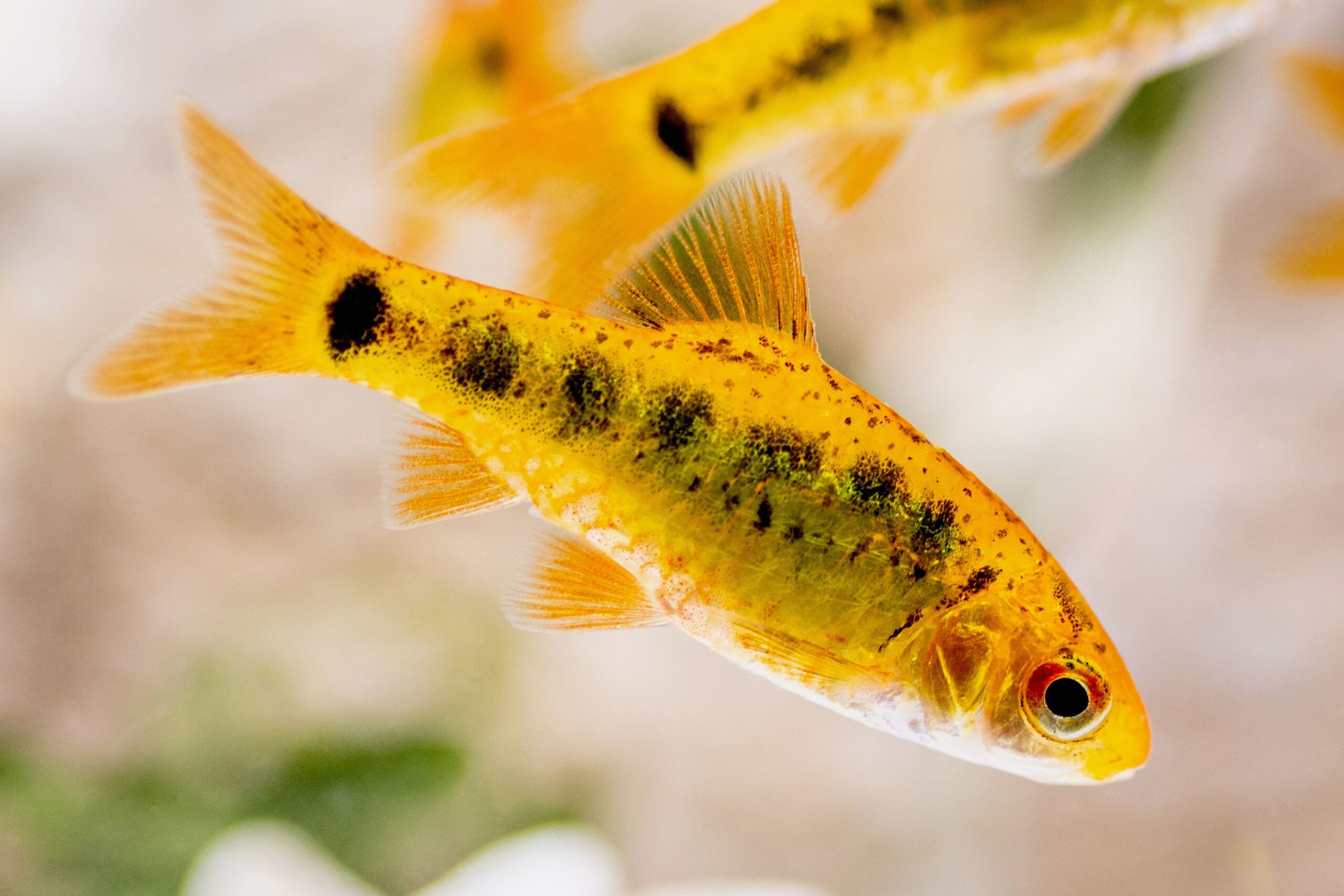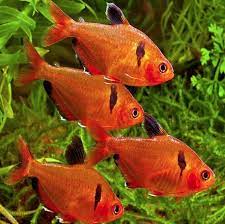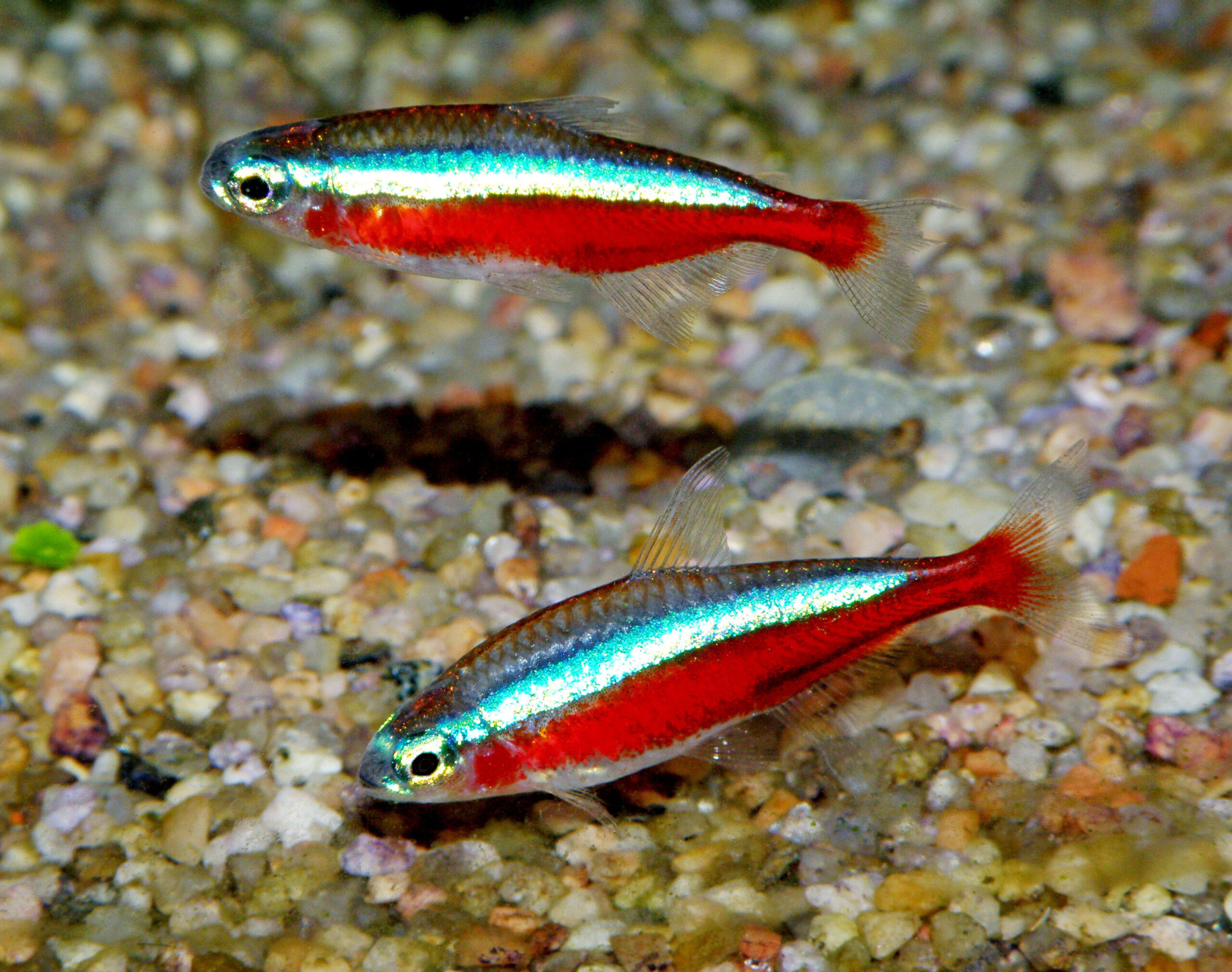Koi fish (Cyprinus carpio) are ornamental carp that originated from Japan. Renowned for their beauty, longevity, and serene presence, they are a staple in outdoor water gardens and ponds. Koi come in a variety of vibrant colors and patterns, and their care, while manageable, requires attention to detail.
Quick Facts
- Care Level: Intermediate
- Temperament: Peaceful
- Color Forms: White, silver, red, gold, orange, black, blue (varies by type)
- Lifespan: 30–50 years
- Size: 24–36 inches
- Diet: Omnivore
- Family: Cyprinidae
- Minimum Tank Size: 250 gallons
- Habitat: Outdoor water garden with plants and proper filtration
- Compatibility: Compatible with other carp, amphibians, and some game fish
Behavior and Characteristics
- Social Nature: Peaceful, forming schools of 5–15 individuals.
- Activity: Active swimmers, exploring all pond levels.
- Foraging: Use a vacuum-like method to feed, often burrowing into sediment to uncover food.
- Seasonal Habits: Shelter in deeper pond areas during colder months.
Popular Koi Types
- Butterfly Koi: Known for long, flowing fins.
- Japanese Koi:
- Kohaku: White with red/orange markings (classic variety).
- Tancho: Kohaku with a single red spot on the head.
- Dragon Koi: Includes Butterfly Koi and Kumonryu (black and white with seasonal pattern changes).
- Shiro Utsuri: White with black spots, often split-head patterns.
- Ogon: One-color variety, often silver, orange, or gold.
Habitat Setup
- Water Parameters:
- Temperature: 74–86°F
- pH: 6–9
- Depth: Minimum of 6 feet, with varied levels for foraging and shelter.
- Pond Size: At least 250 gallons per fish. A school requires up to 1,000 gallons.
- Materials: Concrete pond with rubber lining and a muddy substrate.
- Plants: Water lilies, hyacinth, cattails, floating pondweed, duckweed.
- Shade: Trailing trees like willows are beneficial.
- Extras: Optional waterfalls or streams for slight water flow.
Compatible Pond Mates
- Fish: Goldfish, grass carp, sunfish, catfish, largemouth bass, striped bass.
- Amphibians: Frogs, salamanders, and newts (encourage naturally).
- Avoid:
- Bluegill (competes destructively with carp).
- Small nano fish (may become stressed).
Care and Maintenance
- Common Diseases:
- Koi Herpesvirus (KHV): Fatal with an 80% mortality rate. Symptoms include lesions, sunken eyes, and breathing issues. Quarantine new fish for 2 weeks before adding to the pond.
- Other issues: Ich, fish lice, and ulcerative diseases.
- Maintenance: Clean the pond and check filtration systems every 2–4 weeks.
- Signs of Illness: Lethargy, erratic swimming, gasping at the surface.
Feeding
- Diet: Omnivorous, eating seeds, algae, zooplankton, and insects.
- Natural Foods: Aquatic plants, algae, water fleas, brine shrimp.
- Commercial Food: High-protein pellets.
- Feeding Frequency: 2–3 small portions daily (consider using an automatic feeder).
Breeding
- Requirements: A separate pond with 64–72°F water.
- Process:
- Females lay eggs in vegetation; males fertilize them externally.
- Remove fertilized eggs to an incubation tank; they hatch in 3–4 days.
- Feed larvae brine shrimp and hard-boiled egg mixtures.
- Growth Stages: Fry are raised indoors until they become juveniles and can be reintroduced to the pond.
Suitability
Koi fish are perfect for committed fish keepers who have the space and resources for a large outdoor pond. Their longevity and serene presence make them an excellent addition to any garden. While beginners can start with standard varieties, enthusiasts may eventually opt for the rarer, more expensive breeds.
Whether you’re an experienced aquarist or a beginner, Koi fish are sure to enhance your water garden with their vibrant beauty and peaceful nature!




Reviews
There are no reviews yet.